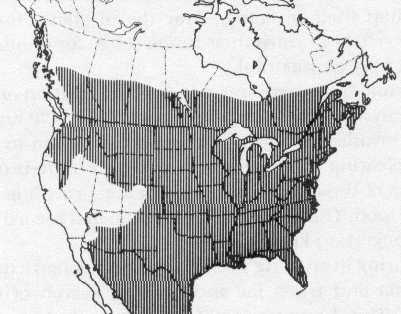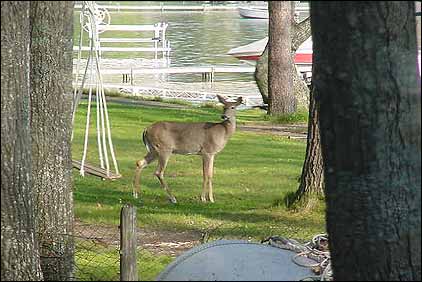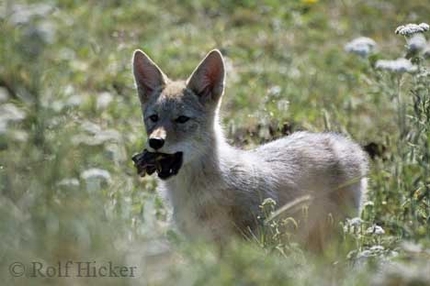The white-tailed deer is found in every state in the United States except perhaps Alaska and Utah. It occurs throughout the southern provinces of Canada, across the United States, and on into Central and South America. The white-tailed deer is the most popular big game species in North America. Mule deer are common throughout western Canada, western United States, and into Mexico. There are several subspecies of both deer and each is found is specific regional areas. Continue reading Range and Habitat of Whitetail Deer
Month: May 2007
Deer Impacts in Urban Environments
Deer are probably the most widely distributed and best-recognized large mammals in North America. The white-tailed deer (Odocoileus virginianus) is found throughout much of North America. The mule deer (O. hemionus)is primarily a western species restricted to buttes, draws, and stream bottoms with sufficient forage. The black-tailed deer (O.h. columbianus) is a subspecies of the mule deer. Both white-tailed and mule deer are very important game animals. Continue reading Deer Impacts in Urban Environments
Economic Impacts of Coyote Damage
Coyotes can cause a great deal of economic damage and loss on a broad scale. Of course, goat and sheep ranchers can potentially feel this loss the worst. Sheep numbers in the United States have declined about 80% from 1942 to 1976. Former sheep producers reported that the principal reasons for leaving the sheep industry included high predation losses, low lamb and wool prices, a shortage of good hired labor, and the producer’s age. Continue reading Economic Impacts of Coyote Damage
Controlling Coyotes and Preventing Damage
For managing coyote damage, a variety of control methods must be available since no single method is effective in every situation. Success usually involves an integrated approach, combining good husbandry practices with effective control methods for short periods of time.
Regardless of the means used to stop damage, the focus should be on damage prevention and control rather than elimination of coyotes. It is neither wise nor practical to kill all coyotes. It is important to try to prevent coyotes from killing calves or sheep for the first time. Once a coyote has killed livestock, it will probably continue to do so if given the opportunity.
Equally important is taking action as quickly as possible to stop coyotes from killing after they start. Continue reading Controlling Coyotes and Preventing Damage
Indentification of Coyote Damage
Coyotes can cause damage to a variety of resources, including livestock, poultry, and crops such as watermelons. They sometimes prey on pets and are a threat to public health and safety when they frequent airport runways and residential areas, and act as carriers of rabies. Usually, the primary concern regarding coyotes is predation on livestock, mainly sheep and lambs. Predation will be the focus of the following discussion. Continue reading Indentification of Coyote Damage
Coyote Biology and Behavior
Coyotes are most active at night and during early morning hours (especially where human activity occurs), and during hot summer weather. Where there is minimal human interference and during cool weather, they may be active throughout the day. Continue reading Coyote Biology and Behavior
Habitat and Food Habits of Coyotes
Many references indicate that coyotes were originally found in relatively open habitats, particularly the grasslands and sparsely wooded areas of the western United States. Whether or not this was true, coyotes have adapted to and now exist in virtually every type of habitat, arctic to tropic, in North America. Coyotes live in deserts, swamps, tundra, grasslands, brush, dense forests, from below sea level to high mountain ranges, and at all intermediate altitudes. High densities of coyotes also appear in the suburbs of Los Angeles, Pasadena, Phoenix, and other western cities. Continue reading Habitat and Food Habits of Coyotes



